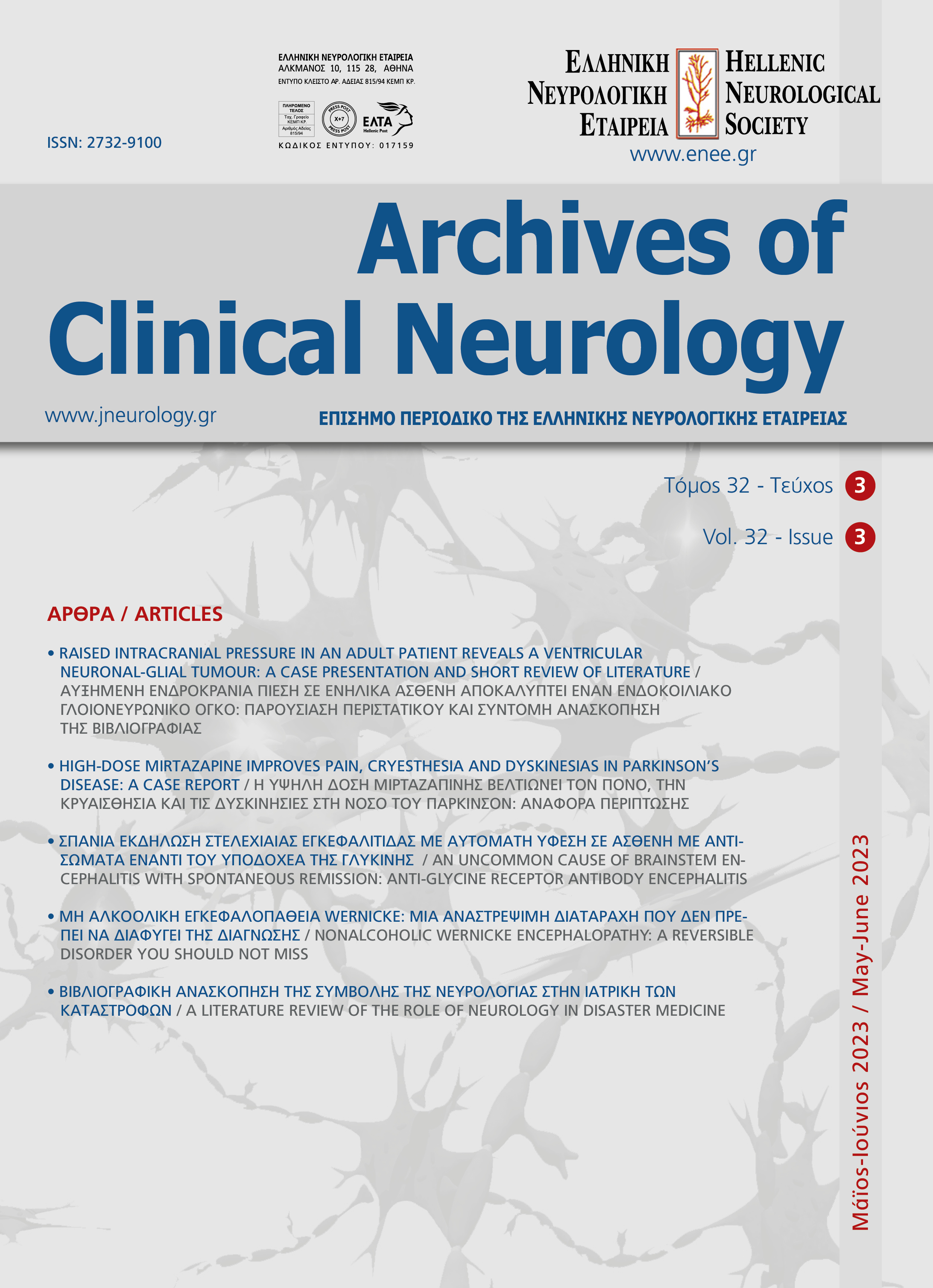RAISED INTRACRANIAL PRESSURE IN AN ADULT PATIENT REVEALS A VENTRICULAR NEURONAL-GLIAL TUMOUR: A CASE PRESENTATION AND SHORT REVIEW OF LITERATURE
Keywords:
PNET, NOS, ventricular embryonal central nerve system tumor, hydrocephalus, leptomeningal contrast enhancementAbstract
We present a very rare case of a middle-aged female who presented with clinical and radiological signs of elevated intracranial pressure non responding despite double external ventricular drain. An explorative ventricular endoscopy appealed a tumor which partially obstructed the foramen of Monroe. Immunohistochemical tests showed that tumor cells were positive for synaptophysin, GFAP and focally for CD99 while they were negative for CD20, TTF1 and CK CAM. The Ki67 profileration marker was measured at approximately 70%. Thus, the morphological image and immune phenotype of the tumor were compatible with PNET. Molecular analysis showed no MGMT methylering of mutation showed in TP53, IDH1, hTERT promoter and the picture was associated with glioneuronal tumor. The patient diagnosed with an embryonal tumor with multilayered rosettes, which was initially difficult to identify. According to our knowledge, the location of this type of tumor is very uncommon and less than 5 cases have been described according to a short review of literature.


